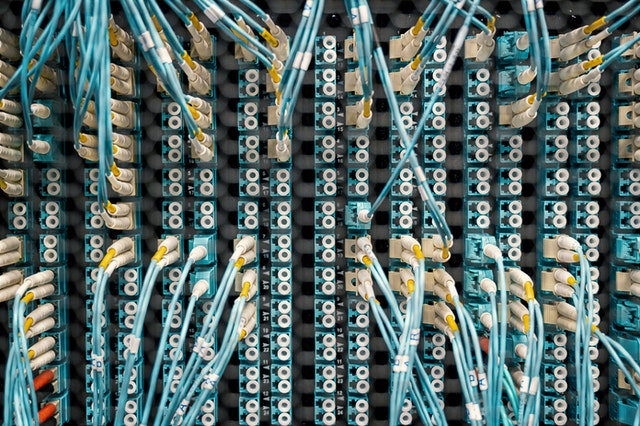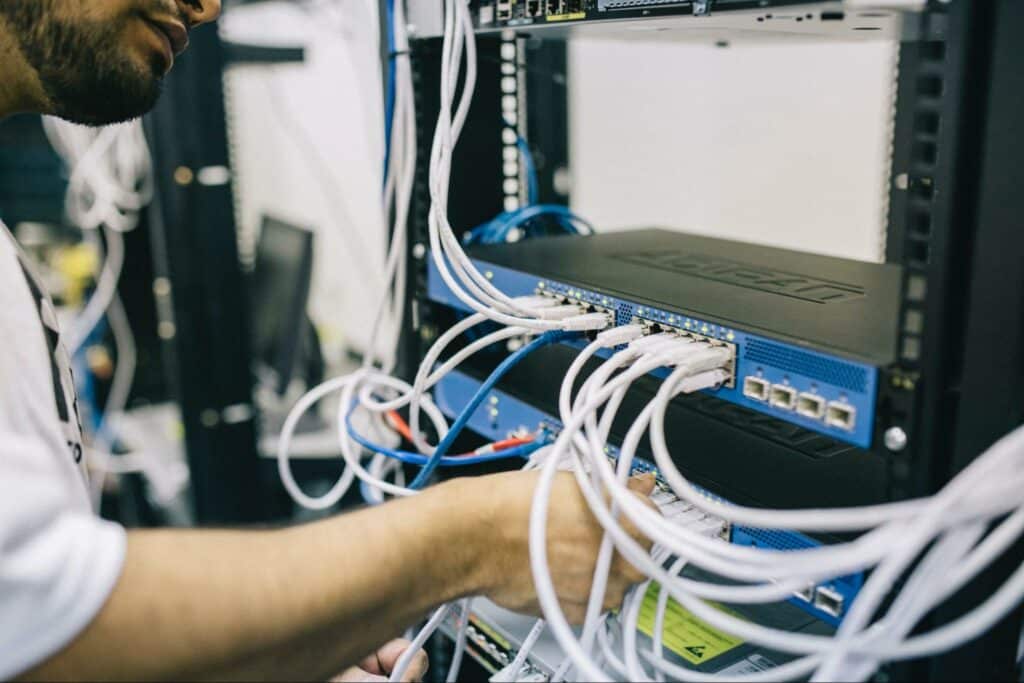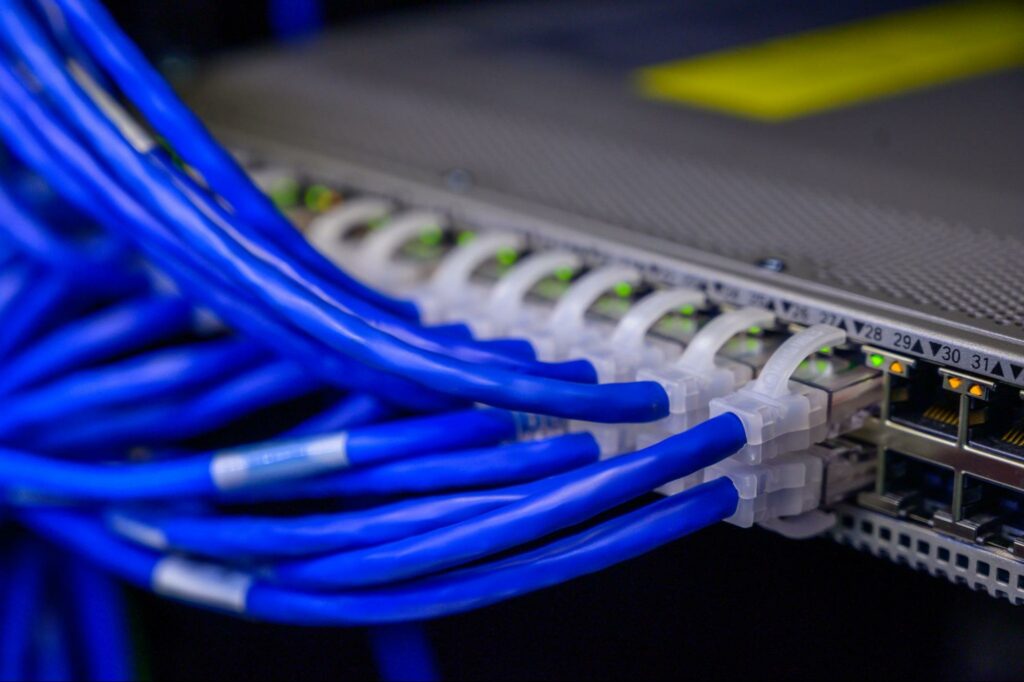If you’ve ever poured your heart into a personal blog, owned an online store, or ran a business website, chances are that you are already familiar with a tech headache called server downtime.
Thankfully, there are a variety of ways to safeguard your site and its data in case of server downtime.
The safest way to avoid downtime is by configuring redundant server networks in your company.
Or, alternatively, you can choose a hosting provider that offers redundant server systems as part of their hosting solutions.
But first, let’s find out what server redundancy is and how it can benefit your website or web app.
Key Takeaways
- Server redundancy is the practice of using two or more servers in a computing infrastructure to keep your web services live in the case one server fails.
- The benefits of server redundancy are:
- Disaster protection
- Failover protection
- Reduced downtime
- Improved hosting performance
- Enabling load balancing
- Generally, cloud dedicated servers are cheaper and simpler to set up for server redundancy than standard dedicated servers.
What is Server Redundancy?
To put it simply, server redundancy refers to the practice of making use of two or more servers in a computing infrastructure. This is to keep hosted services live in the case one server fails. In short, redundant servers enable high availability of hosting solutions.
The way web server redundancy works is by creating a clone of the main server that can be deployed on runtime. The clone can be used for backup, load balancing, or even when you temporarily shut down a server for maintenance purposes.
This clone is called a redundant server, and unlike the active server, it is kept offline until it is needed. Although, it’s still connected to the network and it’s ready to be used at any point.
Why It’s Important to Have Server Redundancy
Having server redundancy is incredibly important if you want to have a stable website or web service. Server redundancy reduces the chances of facing downtime, whether in the case of a natural disaster or cyberattacks.
More importantly, server redundancy increases the performance of your website and allows it to run faster because of the additional computing resources it makes available.
How to Create Server Redundancy
Creating server redundancy on your own can be quite tricky. Let’s look at some aspects you need to consider if you plan to create server redundancy in your current setup.
A New Server
To create server redundancy, you must first set up a new server on which you will store identical information to that on your primary server.
Backup Copies
Backup copies allow you to quickly retrieve your lost data in case of a disaster. They can easily be used to restore your data, and should be made when getting a new server.
Redundant Disk Drives
In case a primary server fails, a redundant drive can take over so that your server keeps running when there’s a disk failure.
Redundant Power Supplies
A redundant power supply will maintain the normal operation of your servers in situations when the main power supply goes down.
Uninterrupted Internet Connectivity
It’s crucial to have uninterrupted internet connectivity and lines from different network providers. This will allow your primary server to be connected to the internet at all times, and in the case where one line fails, the traffic can be shifted to the backup line, thus allowing you to avoid downtime.
Failover Monitoring System
Lastly, you might want to consider implementing a failover monitoring system, which will scan your servers for potential errors. If it detects an issue, it will reroute network traffic to the functioning server by updating the DNS records. The shift happens automatically, and there is no downtime involved.
5 Main Benefits of Server Redundancy
There are plenty of ways in which your business could benefit from investing in server redundancy. But, for the sake of convenience, let’s stick with the five most important benefits of server redundancy:
#1. Disaster Protection
A time might come when hardware fails, software gets corrupted, or a natural disaster strikes. This will leave your servers out of service, along with your hosted services.
By taking advantage of web server redundancy, you are making sure that all critical software and data are backed by a secondary server. This way, if the main server gets damaged, there is another server ready to take over operations.
Even in case of a fire, a flood, or an earthquake, a redundant backup system will enable an easy transition from the main server.
#2. Failover Protection
Failover implies a system’s ability to automatically switch to a reliable backup system in the event of primary system failure. However, this can also come in handy when a system needs to be shut down for the sake of maintenance.
Failover protection is a crucial function for critical systems that require round-the-clock accessibility. If these systems happen to suffer a hardware failure, their failover functionality will ensure that the backup server can take over hosted services right away.
#3. Reduced Downtime
Downtime is a term that is used to refer to periods when a certain system is unavailable, offline, or non-operational. Whether this system failure is a consequence of an unplanned or planned event (such as regular maintenance), everybody knows it’s bad for business.
Frequent downtime events won’t stop at damaging your business’s reputation; downtime events can also put your customers’ data in danger with data breaches. This is because downtime can end up having the same outcome as a cyberattack and result in corrupt or stolen data.
By minimizing the downtime with server redundancy, you won’t only keep your brand’s image intact, but also improve the satisfaction of your customers.
#4. Improved Performance
With each additional server that you include into your system, you’ll improve both the system’s resilience and performance.
By powering your site with a redundant server, you’ll be making sure that the main server is supported in times of exceptionally high traffic. Instead of suffering from poor performance due to restricted amounts of resources, the additional server will take some strain off the main one. This secures fast loading times for your hosted services and keeps all other activities from slowing down.
The only downside here would be the additional cost that server redundancy imposes.
#5. Load Balancing
Server redundancy enables your hosting solution to distribute incoming requests (coming from increased traffic) among multiple servers using load balancers. The result is optimized response time, improved reliability, and higher availability of your hosted services.
In a nutshell, a load balancing server intercepts traffic for a site and redirects it to other servers in the cluster. This can be a life-saver during rush hours, particularly if you are running a multi-site business.
Disadvantages of Server Redundancy
One of the few disadvantages of server redundancy is the cost, as you need to invest a lot of money to buy a second server, store it, maintain it, and, ultimately, power it.
But, in the long run, having a redundant server is more cost-effective than other disaster recovery solutions.
Consider server redundancy as a sort of insurance. You invest money in it and hope that you won’t have to use it. But, in case disaster strikes (e.g., hardware failure), the redundant server could save you from losing customers and damaging your reputation.
Physical vs Cloud Server Redundancy
Although physical and cloud server redundancy serve the same purpose, they are dramatically different in concept. As their names suggest, physical server redundancy implies physical presence, while cloud server redundancy implies moving past the physical limitations of standard servers.
With physical disaster-recovery solutions, you won’t ever be free from purchasing and installing new hardware or finding suitable space to fit new servers.
In contrast, with cloud-based server redundancy, all of your data is safe on the cloud. So, if something goes wrong with your main server, you’ll be able to restore your data from the web in no time.
Here are some other ways physical server redundancy and cloud server redundancy are different:
#1. Cost Efficiency
With standard dedicated servers, you’re facing an upfront cost for purchasing the equipment. Scaling into a redundant system will therefore be very expensive. You also need office space to fit all the servers, a solid internet connection, and an uninterrupted power supply. These all add to the cost of the server redundancy system.
On the other hand, redundant cloud server systems score major points when it comes to cost-effectiveness. They are cheaper in comparison to physical dedicated servers, simpler to scale up or down, and offer a utility-like payment option.
When using cloud dedicated servers, you pay by the hour and only for the resources you’re actively using. However, be wary that the cost of cloud dedicated servers can also add up if your resource usage is high.
#2. Deployment and Decommission
Cloud servers are much simpler and swifter to configure, set up, and deploy in comparison to physical dedicated servers.
With dedicated servers, the whole process could take anything from a few hours to a few days, depending on the web hosting provider you’re working with.
A cloud server can be created in an instant, although you’ll probably have to wait for a few minutes before the files are copied to the cloud server and the booting is complete.
The same rule also applies to server decommission, where a virtual server can be decommissioned or an instance can be destroyed in virtually no time.
Therefore, redundant cloud server systems are much more flexible to work with.
#3. Maintenance
When using physical dedicated servers situated in your office, you’re solely responsible for managing them. This can become a challenge, especially if you don’t have the technical knowledge or an in-house IT team to help you.
With cloud-based redundant systems, the hosting provider is the one who maintains the hardware while you (or your employees) can focus on managing your system via a dashboard.
This takes a huge amount of work off your shoulders and makes it easier for you to work on your hosted services.
RedSwitches Offers Premium Dedicated Web Hosting Servers
Get a dedicated server from RedSwitches today and enjoy premium hosting.Premium Dedicated Servers at Affordable Prices
If you’re looking for bare-metal hosting solutions to help you outperform your competitors, you’ve come to the right place. RedSwitches offers premium dedicated hosting servers that are powerful and reliable.
Our web hosting plans are fully customizable and can fit any type of website. Our team of certified experts can help you choose your server specifications, which you can upgrade at any time in the future.
At RedSwitches, you can also choose whether you’ll pay quarterly, bi-annualy, annually and pay with your preferred payment method, whether it is Bitcoin, credit cards, PayPal, or another!
Contact us today to find out more about our best-in-class dedicated web servers!
Server Redundancy FAQ
#1. How do you create a redundant server?
To create server redundancy, you need to have two servers that store identical data and a failover system monitoring for any potential errors.
#2. What is IP failover?
IP failover allows your hosted services to switch to another server with no downtime. This helps you deal with infrastructure problems such as hardware failure, system failure, and more.
#3. What is the difference between failover and redundancy?
Failover is a protection system set in place to take over hosting operations in the event your main server fails. Meanwhile, redundancy means having an additional server or a server cluster that can be used to support your hosting infrastructure with computing resources besides just offering failover protection.
#4. Why do you need server redundancy?
Server redundancy is necessary for disaster protection, failover protection, reducing downtime, improving hosting performance, and enabling load balancing.
Related Articles
- Dedicated Web Hosting Servers: Definition, Cost, & Features
- Dedicated Server Pricing – How Much Does It Cost?
- What Is the Main Difference Between a Host and a Server?




